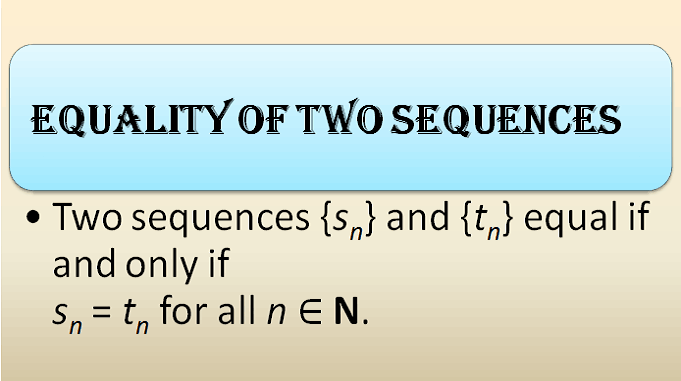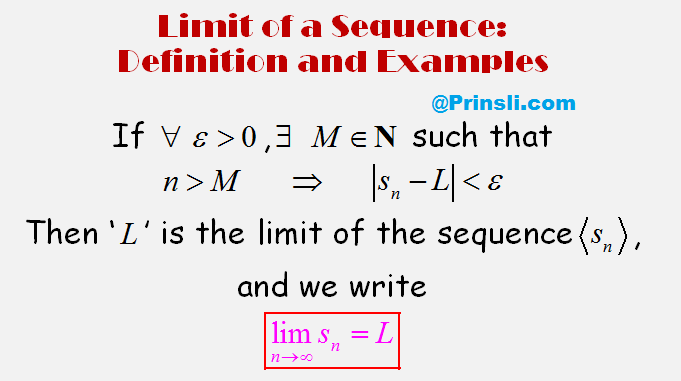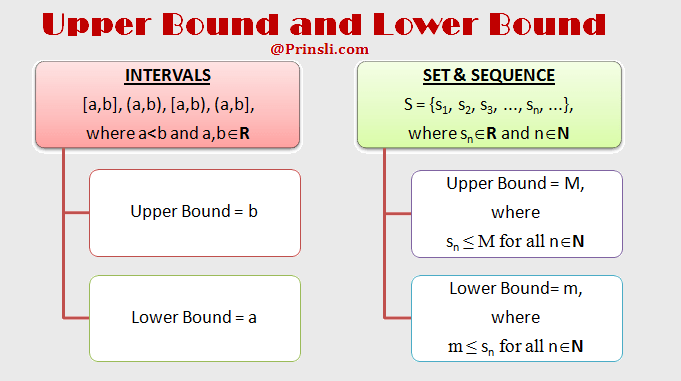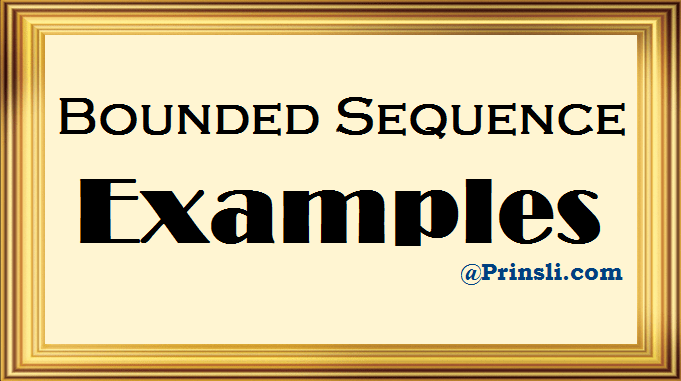
Introduction of Sequence:
A sequence is a set of numbers in a definite order of occurrence. It is denoted by {}, where
is the nth term of the sequence.
The order of terms is of importance in a sequence. Thus the sequence {} is different from the sequence {
}, even though both contain the same terms.
Equality of two sequences:
Two sequences {sn} and {tn} are said to be equal or identical if and only if nth terms of both sequences are equal, that is,
for all n ∈ N.
♦ Example 1:
These two sequences {} = {
} and {
} = {
} are equal, because,
for all n ∈ N,
that is,
for all n ∈ N.
And so,
for all n ∈ N.
♦ Example 2:
These two sequences {} = {
} and {
} = {
} are not equal, because,
{} = {
} = {
},
and,
{} = {
} = {
}
And,
,
implies that,
for all n ∈ N.
अनुक्रम का परिचय (Introduction of Sequence):
अनुक्रम किसी घटना के घटित होने के एक निश्चित क्रम में संख्याओं का समुच्चय है। इसे {} द्वारा दर्शाया जाता है, जहां
अनुक्रम का n-वाँ पद है।
अनुक्रम में ‘क्रम’ का बहुत महत्व है। इसलिए अनुक्रम {}, अनुक्रम {
} से अलग है, अर्थात दोनों अनुक्रम अलग-अलग है भले ही दोनों में समान पद हों।
दो अनुक्रमों की समानता (Equality of two sequences):
दो अनुक्रम {sn} and {tn} को समान या समरूप कहा जाता है यदि और केवल यदि दोनों अनुक्रमों के n-वें पद समान हों, अर्थात्, सभी n ∈ N के लिए,
.
♦ उदाहरण 1:
ये दोनों अनुक्रम {} = {
} और {
} = {
} समान या बराबर हैं, क्योंकि, सभी n ∈ N के लिए,
, अर्थात,
.
इसलिए, सभी n ∈ N के लिए,
.
♦ उदाहरण 2:
ये दोनों अनुक्रम {} = {
} और {
} = {
} समान नहीं हैं, क्योंकि,
{} = {
} = {
},
तथा,
{} = {
} = {
}
और,
,
इसका मतलब है कि सभी n ∈ N के लिए,
.
Copyrighted Material © 2019 - 2024 Prinsli.com - All rights reserved
All content on this website is copyrighted. It is prohibited to copy, publish or distribute the content and images of this website through any website, book, newspaper, software, videos, YouTube Channel or any other medium without written permission. You are not authorized to alter, obscure or remove any proprietary information, copyright or logo from this Website in any way. If any of these rules are violated, it will be strongly protested and legal action will be taken.





Most importantly, I may need to much invigorating for making such a lighting up after 12th. I arrived, what I required. Thanks